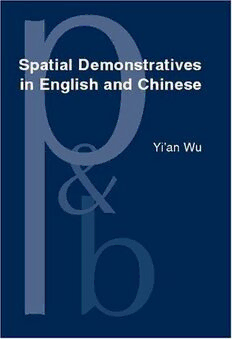
Spatial Demonstratives in English and Chinese: Text and Cognition PDF
255 Pages·2004·1.287 MB·English
Most books are stored in the elastic cloud where traffic is expensive. For this reason, we have a limit on daily download.
Preview Spatial Demonstratives in English and Chinese: Text and Cognition
Description:
As a subject of universal appeal, spatial demonstratives have been studied extensively from a variety of disciplines. What marks the present study as distinct is that it is an English-Chinese comparative study set in a cognitive-linguistic framework and that the methodology features a parallel corpora-based, discourse analysis approach. The framework illuminates the nature of the demonstratives’ basic and extended meaning and use, the connections between them, and the mechanisms that govern and constrain their trends of extension. The corpora place the English and Chinese demonstratives in comparable discourse contexts and processes, providing an “ecological” environment for the observation of how their behavior fits into the respective structural and discourse systems of the two languages. The study also illuminates important issues such as the subjectivity of language, language as a representational system and a vehicle of communication, the interface between form and function, and the role of context in discourse comprehension.
See more
The list of books you might like
Most books are stored in the elastic cloud where traffic is expensive. For this reason, we have a limit on daily download.
